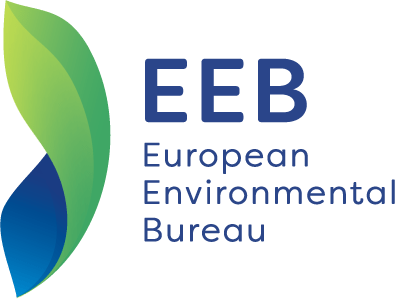Nature and climate protection takes another major hit in EU proposal to “simplify” agricultural policy
As part of the third omnibus package, the European Commission today published a proposal outlining sweeping revisions, or “simplifications”, of the Common Agricultural Policy (CAP), which if implemented would risk dismantling vital environmental protections without evidence or impact assessment, warns the European Environmental Bureau (EEB).
Farmers across Europe are facing the severe impacts of the climate, nature, and pollution crisis, but instead of strengthening environmental standards to support farm resilience, the proposed changes would further weaken the few mandatory green measures left following the last ”simplification”.
Théo Paquet, Senior Policy Officer for Agriculture at the EEB, said:
“Without sufficient impact assessment or real public consultation, the European Commission has yet again casually done away with nature and climate protections in Europe’s largest budget, the Common Agricultural Policy. Such short–sighted decisions will not only hinder farm resilience (due the many benefits provided by healthy ecosystems), but brings the legitimacy of the CAP into question as it strays further from its environmental and climate objectives.”
The EEB is most concerned by:
- Weakening of the protection of grasslands (Good Agricultural and Environmental Condition (GAEC) 1): under the proposal, areas of permanent grassland (vital carbon sinks which release vast amounts of carbon when ploughed) can now be decreased by 10% (up from 5%) from the 2018 reference level before Member States are required to impose obligations to convert back to grassland.
- Weakening of protection of peatlands and wetlands (GAEC 2): The Commission proposes allowing Member States to use existing national legislation to define the rules under this GAEC and to pay farmers to comply with these rules. This would allow public money to be used to fund mere compliance with the law, which would undermine the principle that public money should only be used to fund what is additional to mandatory requirements. This is a missed opportunity to strengthen already weak protections for vital wetlands and grasslands, which are a massive carbon sink, filter and store water and shield farmland from climate impacts. Funding should instead be given to farmers that go beyond the rules and engage in real re-wetting of such areas.
- Removal of links between the CAP and new environmental and climate legislation (notably Articles 120 and 159): This not only marks a step backwards in the EU’s efforts to deliver a “greener CAP” but goes against the requirements set out in the EU treaties to ensure that sustainability efforts are integrated across policies. It would mean that national CAP Plans won’t be required to be coherent with, or contribute to, the Nature Restoration Law or the emerging Soil Monitoring Law. This leads back to a lack of policy coherence and a missed opportunity to provide much needed support to farmers to implement these new European laws.
In addition to these, the EEB has concerns about the proposed changes that would reduce the need for the Commission to approve any changes to Member State’s CAP Strategic Plans, instead only reviewing “strategic amendments”. This could result in weaker oversight and lessen the opportunity for effective monitoring and adjustment of the CAP’s environmental impact.
ENDS
Notes for editors
- Joint statement signed by 60 NGOs warning that the dismantling environmental rules will hinder, not help farmers and urging the Commission to invest in their resilience.
- The Ombudsman has opened an inquiry into the last CAP simplification (which was rushed through in little over a month), reviewing both how the Commission works on ‘urgent’ legislative proposals and how it assess whether its proposals are consistent with the climate-neutrality goals of the European Climate Law.
- Protecting farmers by protecting nature – Preserving wetlands under the Common Agricultural Policy – Joint briefing on GAEC 2 by Wetlands International Europe, BirdLife Europe, WWF European Policy Office, and the EEB published Monday 12 May.
Photo by Ernesto Scarponi on Unsplash

